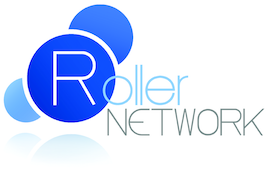For more information from Let’s Encrypt visit:
https://letsencrypt.org/docs/dst-root-ca-x3-expiration-september-2021/
Since September 30th we have received reports from two of our mail services customers that they were no longer able to send/receive mail with their Exchange servers due to a certificate expiration error. Our certificates have not expired; a root certificate (DST Root CA X3) has expired. The Let’s Encrypt R3 is signed by DST Root CA X3 (now expired) and ISRG Root X1 (trusted). The latter, ISRG Root X1, is what should be used.
Since June 2017 Roller Network has been using Let’s Encrypt. Our certificates update continuously: the certificates we have are only valid for 90 days, then are automatically replaced with a new one when they reach less than 30 days until expiration. It’s not possible for us to have “old” certificates since the oldest one will only ever be 2 months old before it gets replaced with a new one (and we monitor every Let’s Encrypt deployed service for freshness with alerts if a cert goes under 28 days). This process happens continuously on every system we have that uses SSL/TLS.
All certificates ultimately rely on a chain of trust based on a root store of trusted certificates present in every platform that the chain of validation is based on. All of these also have an expiration date, but a longer one since changing these either requires an OS update (usually in the form of security updates) or for platforms that no longer receive updates, manually installing new root certificates if it doesn’t have ISRG Root X1 installed. Alternatively, some platforms allow manually setting trust for an expired root certificate or need to remove an old root certificate.
The only reports we have received with TLS problems is with Exchange. Unfortunately we don’t have anyone on staff with Exchange experience, so we don’t have a fix to give out. At this point we can only recommend reading what others have done to address issues with cross-signed certificate authorities, although if we find a procedure specific for Exchange we’ll pass it along. For platforms based on OpenSSL 1.0.x this is a known bug which is fixed by updating to OpenSSL 1.1.x.
The reason the old, expired root is still in the chain is for an Android compatibility thing as detailed here: https://letsencrypt.org/2020/12/21/extending-android-compatibility.html
To view certificates in Windows see:
https://docs.microsoft.com/en-us/dotnet/framework/wcf/feature-details/how-to-view-certificates-with-the-mmc-snap-in
On Windows the expired “DST Root CA X3” should be under Trusted Root Certification Authorities and Third Party Root Certificates. Removing it and rebooting may help (or it may not, we don’t have a way to test an Exchange server).
For a complete list of platforms compatible with Let’s Encrypt see:
https://letsencrypt.org/docs/certificate-compatibility/
